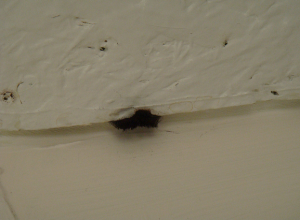While Mother Nature still may be a little confused as to what season we’re in, it is actually Spring in Denver - and Spring means rain. With this (theoretically) warmer weather and increase in moisture, not only does this mean that Colorado will get a little greener, but if you’re not careful with regulating moisture in your house some of that green may find itself creeping into your home.
Mold thrives in moist environments and while not overly common, there is a possibility that it could turn out to be what has been dubbed, “Toxic Black Mold.” While not actually toxic, Stachybotrys chartarum is a slimy, black mold that can affect the quality of air and destroys surfaces it grows on if left unchecked, making it a real menace if it takes residence in your home.
Black Mold and Your Health:
Mold tends to effect most people differently. But for those who don’t possess a natural immunity to black mold’s antigens, the most common reaction is akin to hay fever: difficulty breathing and eye irritation. The most at-risk individuals to be effected by mold’s adverse effects are mostly infants, the elderly and those with pre-existing respiratory issues. But regardless of whether you are healthy as a horse or have a pre-existing illness, a moldy home is certainly not a healthy home.
Where Does Mold Come From:
While Mold spores often find their way into your home by floating in through your open windows and doors or hitching a ride on clothing and pets. The most common source of toxic mold is from water damage in cool dark areas. If your home has suffered from flooding or a leaky pipe, the chances of black mold mold showing up sky-rocket. Your best chance of keeping black mold from taking root in water-damaged areas is to ensure the area is dried within twenty-four to forty-eight hours to prevent mold and mildew growth.
How to Get Rid of Black Mold:
If you happen to stumble upon black mold in your Denver home, it is possible to remove it yourself. By taking care to wear a respirator and covering your arms, legs and hands to avoid contact, you can clean the affected areas by using soap and a sponge to remove visible mold.
However, if you’d rather have a certified Denver mold remediation service solve your mold problem, check one of TeamDaveLogan.com’s trusted contractors to guarantee your home is safe and clean!
The opinions and advice expressed here are not vetted by TeamDaveLogan.com, and you should always do your own research and due diligence prior to starting any project.

